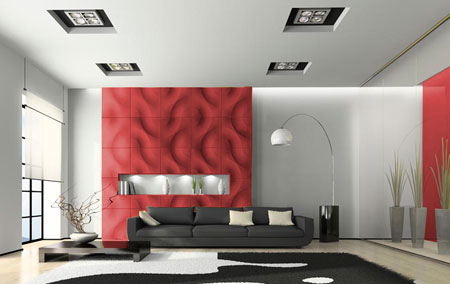Cosmetic tricks for a warmer home
If you’ve followed the savvy advice on our blog for keeping your home warm this winter, you’ll know there are both expensive and cheap solutions out there. But what if you’ve applied these solutions and your home still doesn’t feel as cosy as you’d like?
It could be your interior design choices that are letting you down. Contemporary interiors are often slated for feeling cold and uninviting, which is a problem if you’re a fan of modernist design. To ensure you hit the right balance, we’ve got a few cheeky cosmetic tricks up our sleeve that might just make your home feel and appear warmer.
Colour
Modern interiors don’t have to be exclusively white, grey and black. The inclusion of colour can still say contemporary and if you lean towards the warmer hues, such as red, orange and yellow, you’ll be able to inject a sense of warmth into your scheme, whilst redeeming its modern integrity.
Wood
Just as colour can take the cold edge off a room, the natural earthy tones of wood can also bring a sense of warmth. Modern wooden furniture or accessories can uplift a contemporary interior without heading into the traditional zone.
See our How to warm up contemporary bathrooms with wood blog for ideas.
Accessories
Ultra-contemporary interiors are generally bereft of clutter, which often means accessories are a complete no-no. However, materials such as concrete, slate, tiles and glass that provide those beautiful clean lines in modern designs can feel even colder in the winter. Without going overboard, introducing the odd accessory can soften the look and provide the feeling of warmth. A tactile rug underfoot or an inviting throw or cushions on the sofa can make plenty of difference, without compromising your design.
Lighting
Layered lighting can also help to create a warmer feel to your interior. Combine accent lighting with overhead and task, if required, to warm up dark corners or highlight a feature wall painted in a warm tone.
LED lighting allows you to choose the warmth of the light omitted, which means you can opt for the level of warmth that suits you and your interior. Ranging from very warm (1,000K = candlelight red/yellow) to very cool (10,000K = sky blue), LED lighting gives you the flexibility to adjust the feel of your lighting in line with the seasons.
During autumn and winter you could opt for warm white (3,000K), warm (2,700K) or very warm (1,000K). And in the spring and summer months you could choose between white (4,000K), cool white (5,000K), daylight (6,000K) or very cool (10,000K).
Or you could opt for a combination, using cool white for task lighting and warm for accent lighting.
And finally, never underestimate the power of candles to provide that cosy feeling too.

